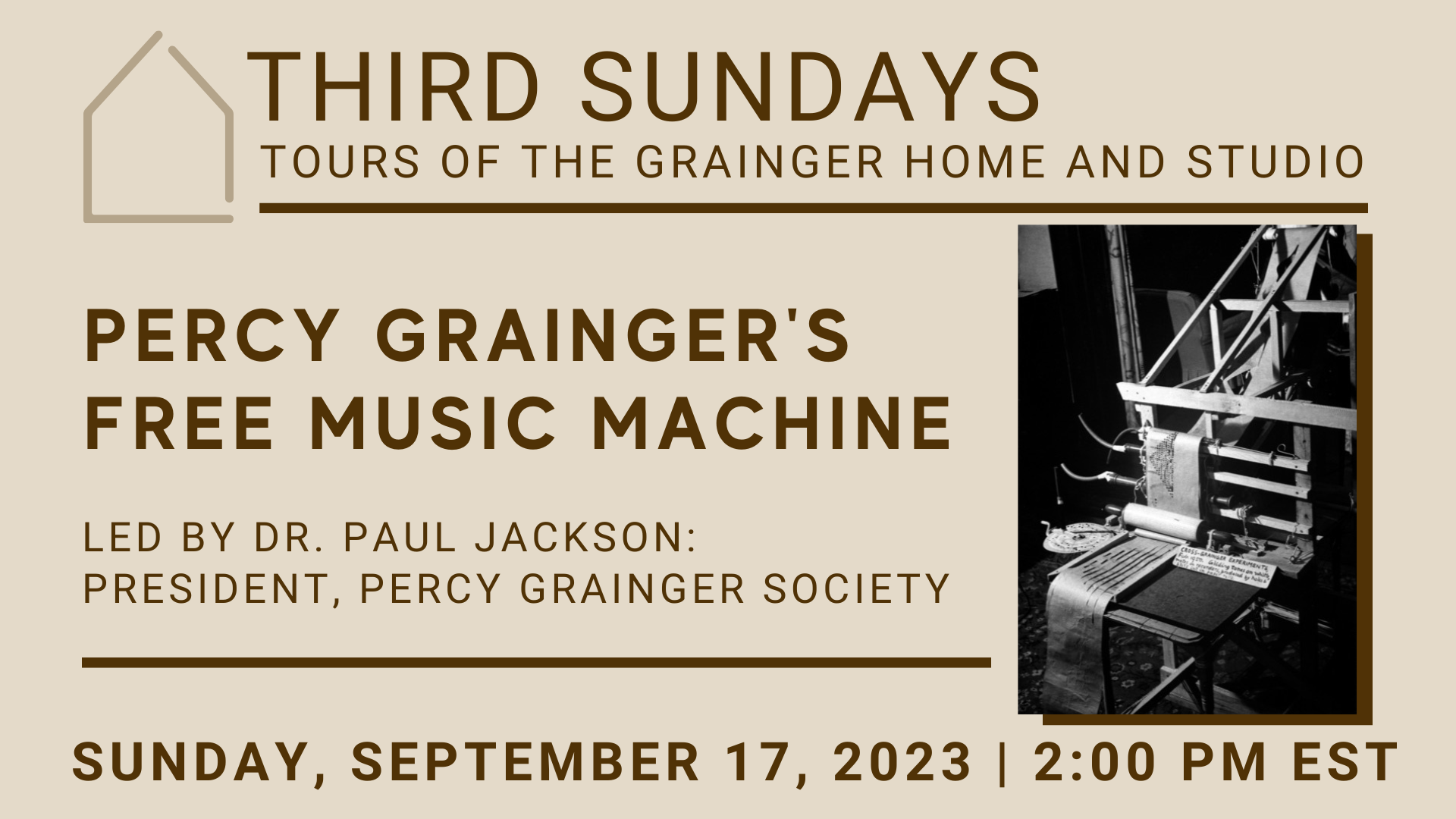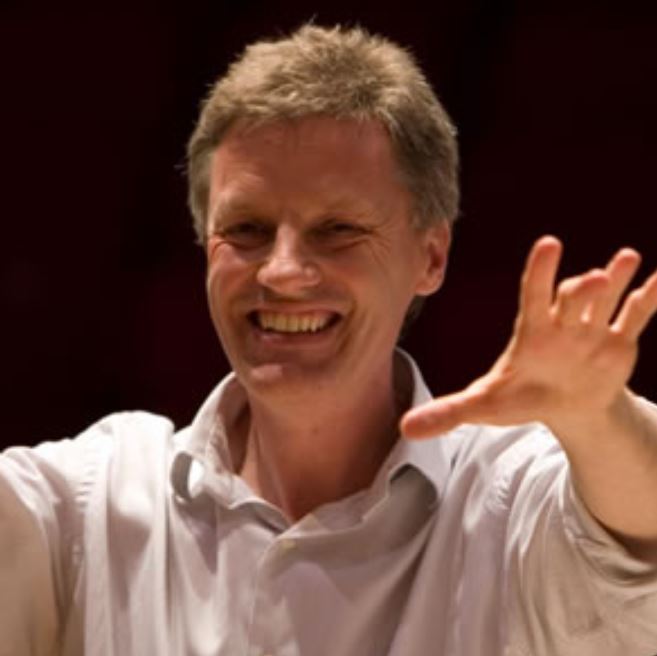
 We invite you to register for our next Third Sunday tour of the Percy Grainger Home and Studio, September 17, 2023 at 2 pm EDT. The Third Sundays program is an outreach initiative, led by volunteers, and designed to welcome diverse groups through focused, thematic tours. We are pleased to announce that Percy Grainger Society President, Dr. Paul Jackson, will be leading the September tour, offering a closer look at Grainger’s approach to and work on Free Music. The presentation will be centered around the newly-conserved Gliding Tones on Whistle, Notes on Recorders machine, one of only two remaining examples of Grainger's Free Music machines. This event is free and open to the public, but due to space limitations, registration is encouraged.
We invite you to register for our next Third Sunday tour of the Percy Grainger Home and Studio, September 17, 2023 at 2 pm EDT. The Third Sundays program is an outreach initiative, led by volunteers, and designed to welcome diverse groups through focused, thematic tours. We are pleased to announce that Percy Grainger Society President, Dr. Paul Jackson, will be leading the September tour, offering a closer look at Grainger’s approach to and work on Free Music. The presentation will be centered around the newly-conserved Gliding Tones on Whistle, Notes on Recorders machine, one of only two remaining examples of Grainger's Free Music machines. This event is free and open to the public, but due to space limitations, registration is encouraged.
For Percy Grainger, Free Music drew its inspiration from the sounds of nature and was music free from the constraints of conventional rhythm and individual pitch. From an early age, he imagined music that would glide continuously across the pitch spectrum, without the need for metrical rhythms and, ultimately, without the need for a performer; the composers’ ideas would be translated directly into sound.
Elements of Free Music can be found in much of Grainger’s instrumental and vocal compositions, where the use of sliding notes and irregular rhythms often feature. Between 1935 and 1937, Grainger wrote three short pieces – Free Music No. 1, Free Music No. 2 and Beatless Music – which further demonstrated his ideas in practice. Grainger regarded all of his music up to this point as merely a stepping-stone to the full development of Free Music, and he was to increasingly devote his time to this from the late 1940s onwards. Using his White Plains home as a studio, he worked alongside his wife, Ella, and in close collaboration with a young physicist, William Burnett Cross, to design and built machines that were able to produce Free Music without the involvement of a human performer.
Most of the machines, given Graingeresque names such as the Side-Ridge Clothes-Line-&-Scotch-Tape-Tin Oscillator-Player, or the Kangaroo-Pouch Method of Synchronising & Playing 8 Oscillators, were constructed from wood, paper, cardboard, string, and other found objects scavenged from the house, local hardware stores and the immediate locale. The machines were in a constant state of flux and were often dismantled or repurposed as soon as sounds were recorded. The final machine, the Electric Eye, remained unfinished at the time of Grainger’s death, but was the most sophisticated and was able to produce seamless electronic pitch glides. It is this machine that places Grainger’s experiments in electronic music squarely alongside other experimental composers.
For forty years, from 1921 until his death in 1961, Grainger occupied the house at 7 Cromwell Place, using it as his home base for his world tours, practice studio (there are two pianos and a harmonium inside), and laboratory for his avant-garde musical compositions and experimental music machines. After Percy Grainger’s death in 1961, his widow Ella continued to live in the house until her passing in 1979. This historic house, built in 1893, was added to the National Register of Historic Places in April of 1993.
 Dr. Paul Jackson is a pianist, conductor, lecturer, musicologist, and education consultant, who was, for over 20 years, Director of Music and Performing Arts at Anglia Ruskin University, Cambridge, UK. His publications include contributions to The New Percy Grainger Companion (2010), to Grainger Studies: An Interdisciplinary Journal (2012) and to John Ruskin and Nineteenth-Century Education (2018). He is editor of The Grainger Journal and President of the Percy Grainger Society.
Dr. Paul Jackson is a pianist, conductor, lecturer, musicologist, and education consultant, who was, for over 20 years, Director of Music and Performing Arts at Anglia Ruskin University, Cambridge, UK. His publications include contributions to The New Percy Grainger Companion (2010), to Grainger Studies: An Interdisciplinary Journal (2012) and to John Ruskin and Nineteenth-Century Education (2018). He is editor of The Grainger Journal and President of the Percy Grainger Society.